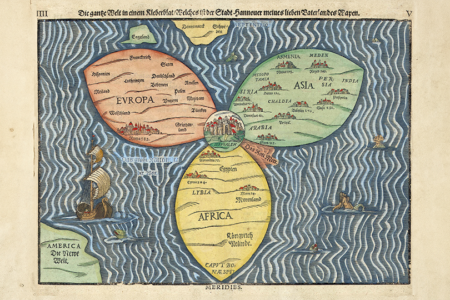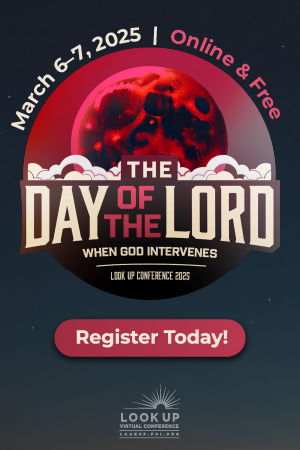THE TABLE OF SHOWBREAD: Christ the Bread of Life
Exodus 25:23-30; Leviticus 24:5-9
Light from the golden lampstand illuminated the table of showbread causing it to sparkle with a dazzling beauty as the small ornately tooled table stood stately on the right side of the holy place.
Moses had instructed the Spirit-filled craftsman on how to construct the table of showbread. The table was made of “shittim” (acacia) wood covered with gold. A gold rim encircled its top, gold rings were placed at each corner, and acacia wood staves covered with gold were placed through the rings in order to carry it. The table was 3 feet long, 1.5 feet wide, and 2.3 feet high (Ex. 25:23-28). Serving vessels of pure gold were provided to minister at the table (Ex. 25:29). The dishes (bread pans) were for the purpose of carrying the bread into the holy place. The spoons (incense cup) were filled with frankincense which was poured on top of the bread and burned upon the altar of incense (Lev. 24:7; Num. 7:14). The covers (flagons) and bowls (cups) were used in the drink offering which accompanied the meal offering in the tabernacle (Lev. 23:18; Num. 6:15).
The Structure Of The Table
The table of showbread typifies our Lord’s life and ministry. The “shittim” (acacia) wood, was a hard, incorruptible and indestructible wood which grows in the Sinai desert. As we saw in the brazen altar it typifies the humanity of Christ who came as a root out of dry ground (Isa. 53:2) and was sinless in His human nature (Heb. 4:15; 7:26). The indestructibility of the wood speaks of Christ in His humanity withstanding the fire of crucifixion (Jn. 10:18); the decaying effect of the grave (Acts 2:31); and His bodily resurrection (Mt. 28:5-6).
The gold in the table is emblematic of Jesus’ deity. The Bible explicitly states that Jesus is divine (Jn. 1:1; 10:30-33; 20:28) ascribing divine attributes to Him such as His eternal existence (Rev. 1:8); omnipresence (Mt. 28:20); omniscience (Jn. 2:24-25); and omnipotence (Phil. 3:21).
The table of wood overlaid with gold typifies the union of Jesus’ divine and human natures (Phil. 2:6-11). The Scriptures teach that He had two natures, but never can we ascribe two personalities to Him. The union of His divine and human natures should never be thought in the terms of deity possessing humanity for this would deny His humanity. Neither should we think that His humanity was simply indwelt by deity. Jesus was uniquely different from any other man who ever walked the face of the earth; both His divine and human natures were united together in one person. This teaching is beautifully set forth in the Scripture, but is difficult for some people to grasp.
The Showbread On The Table
The fragrance of freshly baked bread topped with frankincense filled the holy place. Twelve new cakes of bread containing about six pounds of flour were arranged in two rows of six loaves each. It is not stated in the Scripture that the bread was unleavened, but because it was a meal offering to be used in the tabernade it must be unleaven bread.
The changing of the showbread was an elaborate service. The Mishna (the first section of the Talmud) explains the procedure that the priest used in changing the bread:
Four priests entered the holy place, two of them carrying the piles of bread, and two of them the cups of incense. Four priests had gone in before them, two to take off the two old piles of showbread, and two to take off the cups of incense. Those who brought in the new bread stood at the north side facing southward, those who took away the old bread, at the south side, facing northwards. One part lifted off and the other put on, the hands of one being over against the hands of the other, as it is written, ‘Thou shalt set upon the table bread of the Passover always before me’ (Men. Xl, 7). The loaves that were removed were delivered to the priests for their consumption within the tabernacle, the whole quantity amounting to seventy-five pounds of bread per week.
What is meant by the term “showbread”? The word comes from a Hebrew word which means “bread of the face” or “bread of presence”, because the loaves were set before the face or presence of Jehovah (who dwelt in the holy of holies) as a meal offering from the children of Israel (Lev. 24:8). With delight God gazed upon the pure bread offering which sat continually before His face. Bread is called the staff of life and is emblematic of life itself. The showbread is a foreshadowing of Jesus Christ who is the true Bread of Life, giving unfailing sustenance to all who partake of Him. He was born in the city of Bethlehem which means “house of bread”.
Jesus is pictured as the Bread of Life in many places throughout the Scripture. In John 6 He is referred to as the Bread of Life who has come down from heaven to give life to all who will accept Him. The day before He revealed Himself as the Bread of Life, Jesus performed a miracle by multiplying a young boy’s five barley loaves into enough bread to feed 5,000 men. After the meal 12 full baskets were collected of the remaining bread (Jn. 6:1-14). The next day the people who had been fed followed Jesus to Capernaum hoping that He would provide more food for them. They sought Him only for the material benefits He was able to provide for them (Jn. 6:22-26), not because of the miracle which He had performed.
Knowing their heart, Jesus made a comparison between mere natural food which only gave temporary satisfaction and the spiritual food He provided to bring permanent satisfaction. Misunderstanding His statement the people believed they must do some outward work to acquire eternal life. Jesus replied that it was not the keeping of external ordinances and laws which provided eternal life, but eternal life came through belief in Him (Jn. 6:27-29).
Completely discounting the first miracle the people required a sign from Jesus to validate His claim of being able to provide eternal life. Using the context of the multiplication of bread they gave the illustration of Moses who provided bread from heaven for their forefathers in the wilderness. They reasoned this way: If Jesus was a prophet from God with authority to give eternal life, certainly He would be able to produce convincing evidence such as Moses did when he provided manna from heaven. Jesus corrected their assumption that Moses had given their fathers bread, and gave God the Father credit for providing the manna. Again, Jesus emphasizes that He alone is the true Bread from God who will give eternal life to all who will believe (Jn. 6:30-33). Jesus makes a startling statement,
I am the living bread which came down from heaven: If any man eat of this bread, he shall live forever; and the bread that I will give is my flesh, which I will give for the life of the world (Jn. 6:51).
The metaphor, “eat of this bread,” is not teaching the necessity to literally eat the flesh of Jesus in order to acquire eternal life. Jesus is simply teaching that as food becomes part of an individual as it is consumed, so all who believe in Him as the One to give life are completely assimilating Him. Jesus illustrates this point by comparing His relationship with the Father. As He and God the Father dwell together in oneness (Jn. 6:57), so will the true believer be indwelt by Him (Jn. 6:56).
The showbread typifies Christ’s sinless life. The Mosaic Law strictly forbade the use of leaven, which is a symbol of sin (Ex. 12:8, 15-20, 34, 39; Mt. 16:6, 12; Mk. 8:15), from being used in the flour set aside for priestly ritual (Lev. 2:11). Jesus, the Bread of Life, was without sin (1 Pet. 1:19; 2 Cor. 5:21).
The showbread was produced from fine flour (Lev. 2:1). Fine flour speaks of the evenness and uniformity of our Lord’s life and ministry. For grain to be made into fine flour it needed to be crushed, grounded and sifted. What a picture of our Lord’s ministry! Jesus went through the sifting process of Satan (Mt. 4:1-11) and the religious leaders of His day (Mt. 22:15-40), yet there was no sin found in Him (Heb. 4:15). He went through the crushing experiences of scourging (Isa. 53:4-5; Mt. 27:26-30) and crucifixion (Mt. 27:33-50) for the sin of mankind.
Nature provided a parable for the purpose of Jesus’ coming. In John 12:24 Jesus pictured His life as a grain of wheat which must die to produce fruit. The grain which falls into the ground dies, and through its death the life of that single grain is freed from its encasement to regenerate itself into thousands of other grains possessing the same nature. Through death Jesus brought resurrection-life to all who put faith in His finished work on the cross.
The refined flour had to be baked into loaves. Again, this is a picture of Jesus who went through the fire of persecution, suffering and death for us. Peter states it so well when he writes,
For Christ also hath once suffered for sins, the just for the unjust, that he might bring us to God, being put to death in the flesh, but quickened (made alive) by the spirit (1 Pet. 3:18).
After the loaves were placed on the table they were sprinkled with frankincense as a memorial, and the remainder was burned upon the altar of incense as an offering to Jehovah (Lev. 24:7). It should not be confused with the regular incense burned upon the altar; it was different in substance. The frankincense was a fragrant gum resin which had a silvery white cast to it. The frankincense was ground into powder and burned upon the altar while the priest ate the showbread every Sabbath. The incense emitted a balsam-like fragrance which filled the holy place.
The frankincense typifies Christ in two ways. First, at Jesus’ birth one of the wisemen presented Him with frankincense (Mt. 2:11) emblematic of the fragrance of His life. The incense is so pictorial of the Lord’s life which manifested the sweet fragrance of perfection in all that He said and did. Secondly, the incense is a symbol of Christ through the Christian. Paul says,
Now thanks be unto God, which always causeth us to triumph in Christ, and maketh manifest the savor of his knowledge by us in every place. For we are unto God a sweet savor of Christ (2 Cor. 2:14-15).
The Service at The Table
The loaves were gathered from the twelve tribes each Sabbath to be used in two ways. First, they were brought as a unit by the twelve tribes as a portion of their labor to be dedicated unto the Lord’s service each week. Paul typifies this in the church when he writes,
For we being many are one bread, and one body: for we are all partakers of that one bread (1 Cor. 10:17).
As one bread in the Lord we are to give sustenance to one another by exercising our gifts within the church (1 Cor. 12:12-17).
The Israelites, bringing their bread offering unto the Lord each Sabbath, symbolizes Christian giving. Paul instructs us to systematically set aside a portion of our income as God has prospered us, and as a church present it unto the Lord on the first day of the week (1 Cor. 16:2).
Secondly, the bread provided food to be eaten by the priest on the Sabbath in the holy place (Lev. 24:5-9). We who are believer-priests (1 Pet. 2:9) are to feed upon Christ, the Bread of Life, receiving in return spiritual sustenance and strength for worship and service. It is Jesus who is the source of our spiritual vitality and fruitfulness in service. Jesus said, “. . . for without me ye can do nothing” (Jn. 15:5). Paul saw our great need for Christ when he wrote, “I can do all things through Christ, which strengtheneth me” (Phil. 4:13).
The bread and wine which sat on the table of showbread spoke of the priest’s fellowship with the Lord. Our communion with the Lord typifies this as well. On the first day of the week we gather as a body of believers to have communion with our Lord around the table. We partake of bread and the fruit of the vine in remembrance of Jesus’ broken body and death on the cross in our behalf (1 Cor. 11:23-26).
Today, many Christians are spiritually starving. Some attend churches which only feed them the humanistic philosophic opinions of man. Others attend churches which feed them the husk of spiritual experience without the sound teaching from the Word of God. Jesus stands knocking at the door of our lives asking for admission. He wants to feed us the spiritual bread of God’s Word which can edify us for service.
We should not be content just to feast upon the spiritual sustenance which Christ provides for us without concern for others. We need to look around us at the hungry souls who are starving for lack of spiritual food and provide sustenance for them. If you were the only one in your neighborhood with food, could you in good conscience fill yourself while others were starving around you? Of course you couldn’t! God has commanded us to take Christ, the Bread of Life, to those around us so their spiritual appetites can be satisfied.
The song writer sums up what should be the desire of each Christian:
Guide me, O Thou great Jehovah, Pilgrim thru this barren land,
I am weak, but Thou art mighty – Hold me with Thy powerful hand;
Bread of Heaven, Bread of Heaven, Feed me till I want no more.
Feed me till I want no more.







